8.6 /10 1 Votes
82% Metacritic Initial release date 13 December 2007 Developer Psygnosis | 8.8/10 IGN Genre(s) Racing Series Wipeout Designer Psygnosis | |||||||||||||||||||||||||||||||||
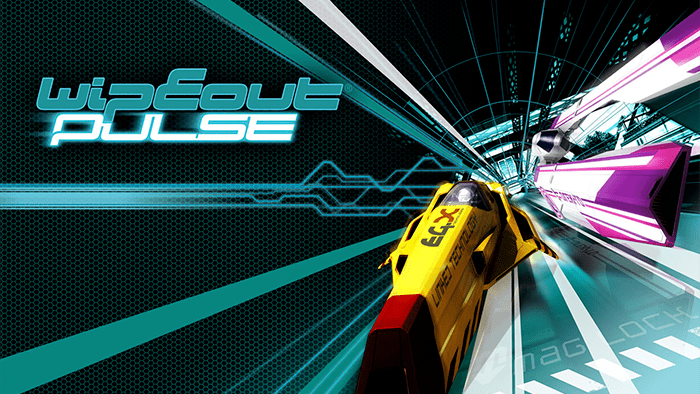 | ||||||||||||||||||||||||||||||||||
Publisher Sony Interactive Entertainment Similar Wipeout games, Psygnosis games, Racing video games | ||||||||||||||||||||||||||||||||||
Classic game room wipeout pulse review for psp
Wipeout Pulse (stylised as wipEout pulse) is a futuristic racing video game developed by SCE Studio Liverpool and published by Sony Computer Entertainment for the PlayStation Portable. It was first released in December 2007 in Australia and Europe, and in February 2008 in North America. A PlayStation 2 port was released exclusively in Europe in June 2009. The game is the seventh instalment of the Wipeout series and serves as a sequel to Wipeout Pure. It takes place in 2198 and revolves around players competing in the FX400 anti-gravity racing league.
Contents
- Classic game room wipeout pulse review for psp
- Wipeout pulse on pc all tracks ppsspp 0 9 9 1 1080p 60fps
- Gameplay
- Development
- Reception
- References

The game was developed by Sony Studio Liverpool. Production was centred around focusing on the feedback left by fans regarding Wipeout Pure, and improving on aspects where the development team thought they had failed in with the predecessor. The game features sixteen licensed music tracks from techno artists, including Kraftwerk. Wipeout Pulse received positive reviews upon release. Critics praised the graphics and presentation, although some criticised the repetitiveness and hard difficulty.
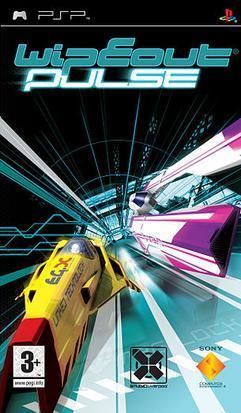
Wipeout pulse on pc all tracks ppsspp 0 9 9 1 1080p 60fps
Gameplay
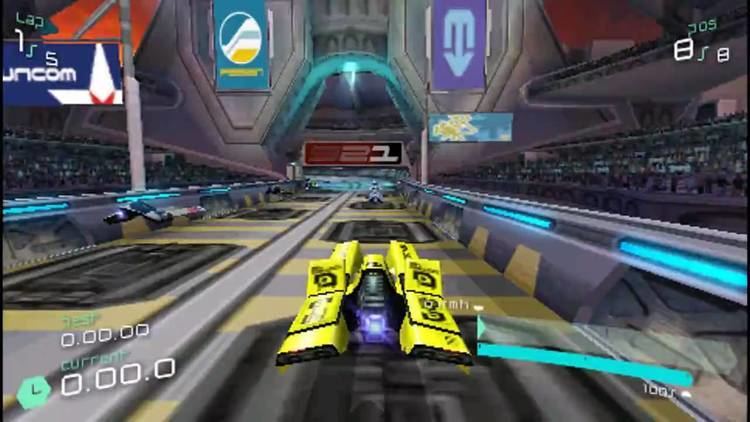
Wipeout Pulse is a racing game set in 2198, one year after the events of Wipeout Pure. As with its predecessor, the game revolves around players competing in the FX400 anti-gravity racing league. Players pilot anti-gravity ships owned by racing corporations (collectively refereed to as "teams" in-game). There are ten teams in Wipeout Pulse, with one ship available for each – although the player will have the ability to upgrade and change the appearance of their ships. Each ship has different characteristics; depending on the team chosen, its ship will vary in terms of handling, speed, acceleration and shield strength.

Every ship is equipped with an energy shield which will protect the player from damage sustained from weapons fire or colliding with walls, although energy is taken away if this happens. If the shield completely runs out, the ship will explode and the player will be eliminated from the race. In addition, the player's ship is equipped with air brakes which can be used for manoeuvring through difficult corners at high speed. The game features a number of weapons which can be utilised to destroy other opponents or for self-defence. Defensive weapons range from shields—which make the player's ship invulnerable to damage for a short period—to land mines and stationary bombs. Offensive weaponry vary from machine guns, missiles, plasma bolts, and a "quake" – which comes in the form of a devastating earthquake that will damage all opponents.
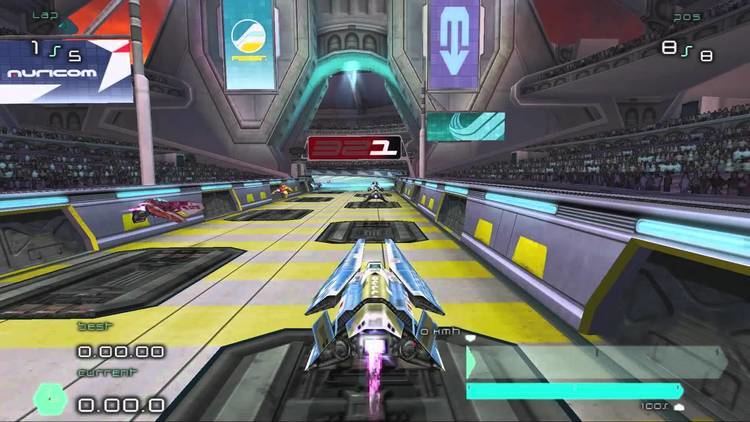
The campaign mode features sixteen grids divided into cells, each containing a separate event which will vary from ordinary races to tournaments. Once the player finishes the event in a single cell, they will earn "completion points" needed to progress to the next grid. Clearing a cell will unlock additional cells adjoining it. Returning game modes from Wipeout Pure includes single races, tournaments, time trials, and the "Zone" mode, which involves the player's ship automatically accelerating to extreme speeds. A returning game mode from Wipeout 3 is "Elimination", which revolves around a group of competitors attempting to destroy each other the quickest in a set amount of time.
Development
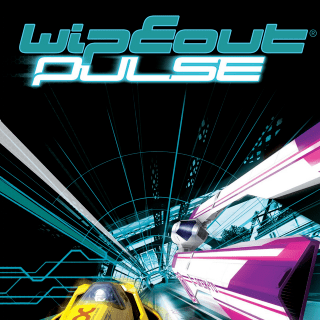
Wipeout Pulse was developed by Sony Studio Liverpool (formerly known as Psygnosis). Colin Berry, the lead designer of the game, stated in an interview that the team had received a lot of positive feedback from Wipeout Pure, and was willing to use parts of the feedback to "help shape some elements of Pulse". According to Berry, some people had felt that the previous game was too difficult; the ships were considered too fast and the artificial intelligence (AI) too advanced, whereas others thought that the game was too easy and they wanted "something more challenging to keep them coming back". The development team also took steps to decrease the feeling of repetition, which was often cited as one of the main complaints of Wipeout Pure. In addition, the team altered the game's difficulty settings so that players were given the choice to change the speed of the game at any time, in the event that they "got stuck". Reflecting on this, Berry said: "We want the people who buy it, to see all the game, we do not want to lock them out".
During development, the team decided early on to focus on creating new content rather than bringing back old race tracks which were featured in previous Wipeout games. Berry, however, acknowledged that classic tracks "went down well" and sought out the possibility of introducing them through future downloadable content (DLC). Berry stated that by the end of Wipeout Pure, Sony Studio Liverpool had designed almost 100 tracks as potentials to include in subsequent games, although the team were only satisfied with 32 of them. The remainder of the tracks were either disregarded or amalgamated into other games. Berry reflected that the tracks using the same 3D computer graphics software as its predecessor meant that certain repetition appeared and caused the team to "dry up on ideas". The developers recognised that track design was an important aspect to the game, and also accepted the difficulty in designing a track that is both memorable and enjoyable. Berry felt concerned that the team were starting to repeat design features, and thus decided to create new variables to the track design: as a result of this, the team conceptualised the "mag strip" – a section of a track which would feature artificial gravity so that a player could safely circumnavigate loops, steep slopes, and upside down sections.
After the release of Wipeout Pure on the PlayStation Portable, rumours circulated that a port was in development for the PlayStation 2. In January 2009, Sony issued a statement saying: "There are over 9.5 million PS2s in the UK and we will continue to support this large userbase with software on an ongoing basis". The PlayStation 2 version was released exclusively in Europe in June 2009, featuring enhanced graphics and all of the DLC.
The game also features sixteen licensed music tracks in addition to customisable soundtracks from techno artists, including Kraftwerk, DJ Fresh, and Skream.
Reception
The game received positive reviews upon release. It holds an average score of 82 per cent at Metacritic, based on an aggregate of 40 reviews.
Critics unanimously praised the game's visuals and presentation. Jeff Haynes of IGN stated that the game was "Wipeout at its purest", praising the visual presentation of the courses, cities, and other environments. Gabe Graziani of GameSpy thought the graphics were beautiful and also commended the design of the tracks. Eduardo Zacarias of GameZone stated that Wipeout Pulse was a "very visually pleasing game with some solid visual effects", and also praised the detailed tracks and ships. A reviewer from Game Revolution considered the game's level of detail to the tracks and smooth framerate to be "staggering" on a handheld. The reviewer also praised the "meticulously constructed" backdrops and "incredibly styled" presentation. Guy Cocker of GameSpot said that the visuals were "superb", though he thought that many aspects were similar to its predecessor, Wipeout Pure. A reviewer from Edge described the visuals as "even smoother, brighter, and sharper than Pure's".
The various aspects of gameplay were mostly praised, although some reviewers criticised the game's repetitiveness and difficulty. Tom Bradwell from Eurogamer praised the new "Elimination" mode, stating that it was initially "alarming" and frustrating, but admitted that it "grows to be rather good". Cocker enjoyed the new tracks, the difficulty levels, and the promise of downloadable content, although he noted that it had not been made available in the United States at the time of his review. Game Revolution's reviewer surmised that Wipeout Pulse was a more refined version of Wipeout Pure, stating that despite all of the solid and reliable gameplay, the game did not revolutionise the series. Regarding general gameplay, Zacarias opined that Wipeout Pulse "doesn't deliver" despite the variety in the game modes and "racetrack front". Haynes similarly gave a negative opinion on the gameplay, stating that the repetition of tracks and balance of weapons for the AI was disappointing. Graziani criticised the game's difficulty, saying that it was "extremely challenging to the point of being impenetrable for the uninitiated". Edge's reviewer described the game as simply another instalment of Wipeout.
